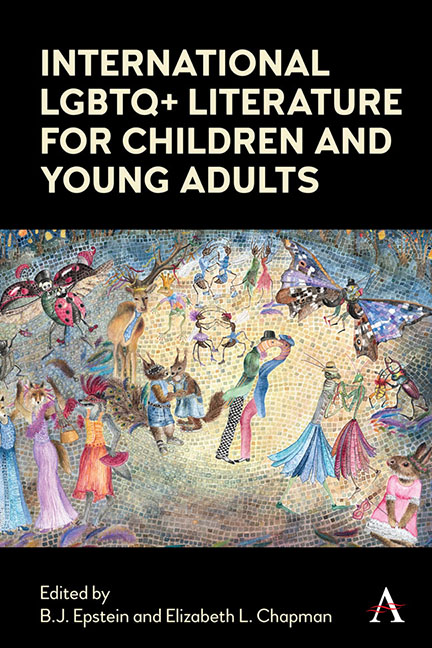Book contents
- Frontmatter
- Dedication
- Contents
- List of Illustrations
- Acknowledgements
- Notes on contributors
- Introduction
- BRAZIL
- FRANCE
- GERMANY/ AUSTRIA
- GREENLAND
- INDIA
- INDIGENOUS WRITING
- ITALY
- MULTINATIONAL
- MULTINATIONAL
- MULTINATIONAL
- THE PHILIPPINES
- SLOVENIA
- SOUTH KOREA
- SPAIN
- SWEDEN
- SWEDEN
- List of Primary Texts
- Index
Chapter Eleven - Of Fabulous Flowers and Powers: Queer Narratives of/ for the Filipino Child in Philippine Contemporary Children’s Literature
Published online by Cambridge University Press: 18 November 2021
- Frontmatter
- Dedication
- Contents
- List of Illustrations
- Acknowledgements
- Notes on contributors
- Introduction
- BRAZIL
- FRANCE
- GERMANY/ AUSTRIA
- GREENLAND
- INDIA
- INDIGENOUS WRITING
- ITALY
- MULTINATIONAL
- MULTINATIONAL
- MULTINATIONAL
- THE PHILIPPINES
- SLOVENIA
- SOUTH KOREA
- SPAIN
- SWEDEN
- SWEDEN
- List of Primary Texts
- Index
Summary
Introduction
In late 2019, I was among the selected Filipino writers who participated in a workshop sponsored by Room to Read, an international non-profit organization that makes a commitment towards accessible literacy campaigns to children in vulnerable communities around the world. The goal of the workshop was to develop short stories for children that centre on gender equality, social inclusion and representation of children's experiences in the Philippine social landscape. The work that I was able to produce is entitled Sayaw ni Dayaw (Dayaw's Dance), later brought to life by Filipino illustrator Harry Monzon and published by Anvil Publishing in 2020. In the story, a little frolicsome girl explores various Philippine cultural dances in search for a dance that fits her playful persona. Ultimately, she discovers that Tinikling, a well-known Philippine cultural dance where performers jump over clashing bamboo poles as fast as they can, is the right dance for her.
During the storybook development stage, there was a move to make the character gender-neutral in terms of the illustration, which meant that she would no longer be wearing the skirt that was representative of the rural community in Leyte, Philippines, where the dance originated. With my background as a cultural dance performer, I respectfully defended the need to differentiate the gender of the performer. In a study that I have conducted on gender roles in Philippine cultural dances (Sayuno 2017), I found that many dances from cultural communities that have foreign influences delineated gender roles: men are expected to be chivalrous for Spanish-influenced Maria Clara dances and polygamous for tribal dances in Mindanao, particularly those originating from the Malay race; women are viewed as demure, waiting for the males to either court them or choose them as the next bride for child-bearing. For rural areas and tribes with lesser to no foreign influence, equality in gender roles is evident. In Cordillera dances, the male and female performers in tribes are seen to have different forms of power and complementary dance movements. In rural areas in Luzon and Visayas, both men and women perform laborious farm work and the challenging movements in their festive dances.
- Type
- Chapter
- Information
- International LGBTQ+ Literature for Children and Young Adults , pp. 199 - 224Publisher: Anthem PressPrint publication year: 2021

